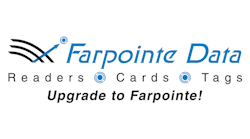Securing today’s healthcare facility can yield widely different types of solutions. Patient, staff and visitor safety, privacy issues, pharmaceutical storage, parking administration, access and egress, and a host of other challenges can test the expertise of the very best integrators. However, there are some overriding issues that every healthcare facility faces. Here are what some leading electronic access control manufacturers highlight for their healthcare customers.
With an aging population in the United States, one thing is for sure: The healthcare market will continue to grow. According to Industry Intelligence from First Research, a division of Hoover’s, “The U.S. output for healthcare — a sector that includes physicians, dentists, hospitals, home healthcare, nursing homes and daycare services — is forecast to grow at an annual compounded rate of 6 percent between 2013 and 2017.”
Other research agrees and the numbers are almost inconceivable. Russell Reynolds Associates states, “As the global healthcare industry grapples with an unsustainable cost trajectory, it also is facing increased demand for healthcare services by an expanding pool of consumer-patients and by growth in costly chronic disease management. Global healthcare costs, currently estimated at $6 trillion to $7 trillion, are projected to reach more than $12 trillion within just seven years.”
Thus, healthcare security needs are rising at phenomenal rates, making healthcare an important and expanding source of revenue for today’s electronic access control integrators.
New Challenges in Protecting Healthcare Facilities
“Controlling access in a facility that is considered to be ‘open’ to the public is a challenging concept,” says Rick Caruthers, executive vice president of Galaxy Control Systems. “Most healthcare facilities walk the fine line between becoming more secure yet not give the perception of being unfriendly and secured. The simple fact remains that healthcare facilities have many concerns to address including employee and visitor security, securing narcotics and securing valuable assets. There is also an increased concern in areas such as the Emergency Department where victims of violent crimes are treated. In these cases, emotions run high during times of treatment, putting staff at an extreme risk. Utilizing access control can help create a safe zone between the general public and the working staff.”
“The healthcare industry needs access control solutions that fit the needs for security, organizational efficiency and operational convenience,” adds James Duff, marketing manager for Kaba ADS Americas. “For instance, access control systems use credentials and all but eliminate keys. With access permissions programmed into our Keyscan system software, healthcare staff use credentials to access only areas they are permitted to be in. Plus, lost or stolen credentials are removed from the system in seconds, ensuring the facility remains secure. Also, to protect staff and new parents at a facility’s labor and delivery ward, a lockdown feature can be integrated between the facility’s infant security system and the access control system. If any infant is unknowingly taken toward any exit, the infant alarm sounds and the floor is entered into a system-initiated lock down.”
The integration of emergency notification and notification capabilities along with state of the art access control is definitely a trending priority with health care professionals. “Today, there are a few new dynamics at play when evaluating access control solutions vs. days gone by,” advises Karen Evans, president and CEO of Sielox. “Aside from an access control system’s ability to accommodate new locking solutions, including wireless locks, and provide some degree of identity management and IT security to prevent hacking, healthcare facilities are faced with the ongoing issue of violence on their premises, which can take place in areas outside of emergency room where incidents typically occur. Integrating an emergency notification and response solution that can instantly initiate an alert condition enables communications with first responders. Additionally, the ability to visually track and report status in real time on a room-by-room basis provides a pragmatic and economical solution.”
Wireless is another technology sweet spot in the healthcare access control market. “Over the past 10 years, wireless communications in the access control and security system integration space has become inexpensive, yet reliable and secure,” says Tony Diodato, founder and CTO of Cypress Computer Systems. “Simple devices that allow unique solutions to otherwise difficult installations are widely available. It seems every healthcare facility has a parking structure or related building across a public street. Direct wiring is out of the question — yet security monitoring and controlled access are a must. Understanding what solutions are available and how to apply reliable, inexpensive technology to solve the problem, are vital skills needed by an integrator.”
IDs and badge management is also coming of age. “Gone are the days when Wiegand was considered inherently secure due to its obscure and non-standard nature,” Diodato says. “No one would accept usernames and passwords being sent in the clear, nor should they accept vulnerable credential data. ID harvesting has become one of the most lucrative hacking activities. SIA’s OSDP Specification brings standardization and security to this final frontier of access control system design and implementation.”
Wiegand is vulnerable. In addressing its security at Farpointe Data, we encourage our integrators and access control manufacturing partners to explain to their healthcare customers that there are five quick ways, among others, to remedy prospective Wiegand system hacking.
- If Wiegand must be used, log user entry patterns and use a video surveillance system to match card entry ID with visual ID. Additionally, consider an intrusion alarm for particularly sensitive environs.
- Install readers with tamper-proof screws and employ a tamper switch. If an assailant moves the reader from its mount, the system is alerted.
- Further tamper-proof by using potted readers. With potted readers, data lines are not exposed to the unprotected front of the reader.
- Make use of the “card present” signal. Like a third data line, card present alerts the access system that credential data is pending. Without delving into 4XX level electronics, this raises the security of the system.
- Consider a protocol alternative. Instead of Wiegand, use ABA Track II. The industry standard set by the American Banking Association for magnetic stripe cards, many contactless readers and cards from the leading manufacturers can already make use of it.
ROI is the Key
“In today’s economic environment, government-driven health care facilities crave systems that offer a high return on investment (ROI). These organizations seek to leverage money spent over a growing number of years to maintain and control service budgets for effective security deployment,” stresses Larry Turnbull of RBH Access Technologies.
According to Turnbull, an access control solution must, therefore, meet the following three requirements to meet these challenges:
- Upgradeability – A proper system should upgrade seamlessly with little effort. When the software is upgraded, accompanying flash firmware should be used to upgrade any and all controllers without the loss of functionality. Software should never make existing controllers obsolete. This means that their system never becomes outdated.
- Limited Software Maintenance Fees – Excessive software maintenance fees may stifle the growth of any access control system. Essentially, the end-user pays so much to keep the software running, they cannot afford the proper upgrades to enhance security as required.
- Flexibility – As new technologies evolve, the physical access control system must adapt to accept these devices. No one should have to change their system just because the latest reader technologies are not accepted.
Scott Lindley is President of Farpointe Data Inc., a DORMA Group Company. To request more info about Farpointe, visit www.securityinfowatch.com/10215927.




